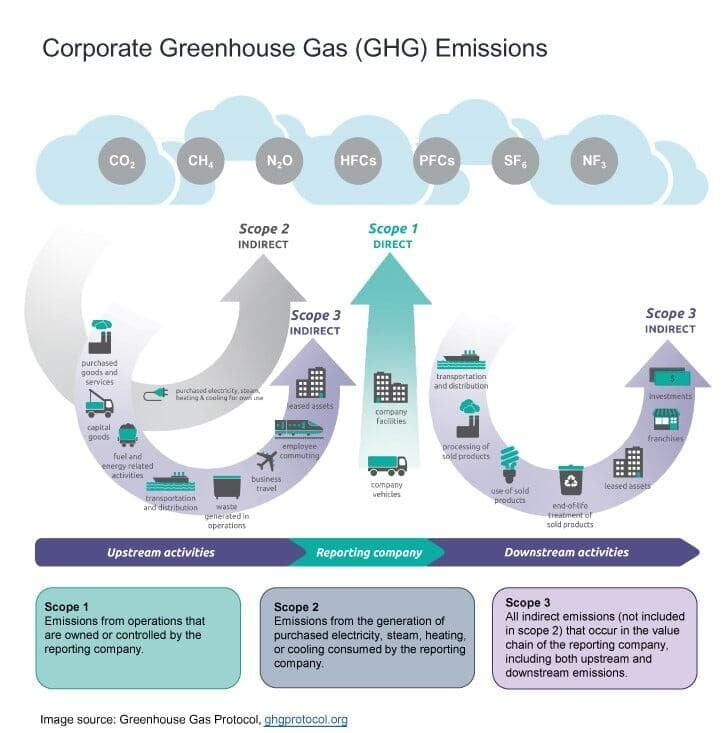Scope 1: Direct Emissions
Definition: Scope 1 covers direct emissions from owned or controlled sources. For businesses, this might include fuel combustion in boilers, furnaces, vehicles, etc.

Calculation Steps:
Calculation Steps
- Collect Energy Consumption Data: Record the amount of electricity, steam, heating, and cooling purchased and consumed within your operations.
- Use Location-based and Market-based Methods: Apply both methods where applicable. The location-based method reflects the average emissions intensity of grids on which energy consumption occurs. The market-based method reflects emissions from electricity that companies have specifically purchased or contracted.
- Calculate CO2e Emissions: Multiply the energy consumed by the emission factor for the corresponding energy source.
Scope 2: Indirect Emissions
Definition: Scope 2 accounts for indirect GHG emissions from the generation of purchased electricity, steam, heating, and cooling consumed by the reporting company.

Scope 3: Other Indirect Emissions
Definition: Scope 3 encompasses all other indirect emissions that occur in a company’s value chain, including both upstream and downstream emissions.

Calculation Steps:
Tools and Resources
The GHG Protocol provides calculation tools, emission factor databases, and guidance documents to aid in accurately calculating Scope 1, 2, and 3 emissions. SC&B Green offers expert consulting services to navigate these resources effectively, ensuring your emissions calculations align with global standards and best practices.
Why Accurate Calculation Matters
Accurate emissions calculation enables organizations to identify significant emission sources, set reduction targets, track performance, and communicate efforts transparently to stakeholders. It lays the groundwork for effective climate action plans and compliance with regulatory requirements.
Collaborate with SC&B Green
Leveraging the GHG Protocol’s framework, SC&B Green is dedicated to assisting organizations in accurately calculating their carbon footprint across all scopes. Our expertise ensures not only compliance but strategic insights that drive sustainability and operational excellence.


